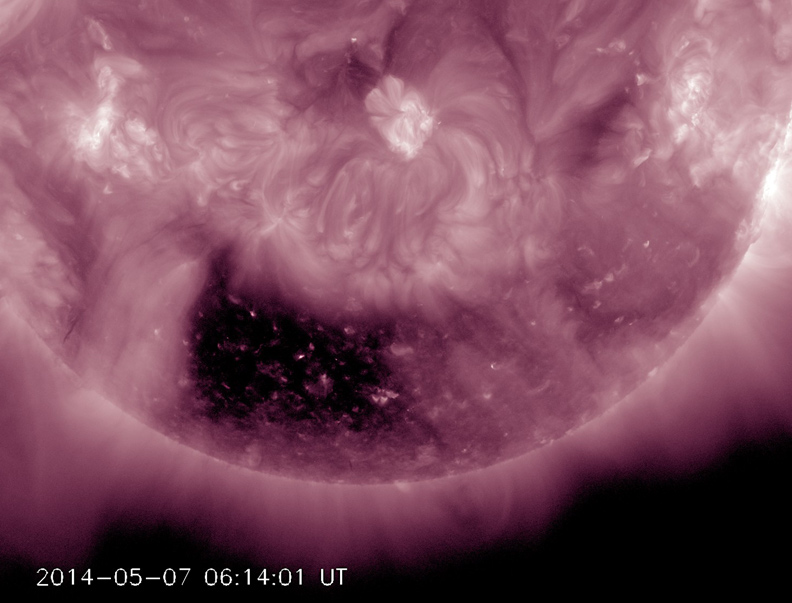Coronal holes are actually happening less right now, because we are experiencing a solar maximum. During this portion of the recurring cycle, the number of coronal holes decreases. During solar max, the magnetic fields on the sun reverse and new coronal holes appear near the poles with the opposite magnetic alignment.
The coronal holes then increase in size and number, extending further from the poles as the sun moves toward solar minimum again. At such times, coronal holes have appeared that are even larger than this one. They are the source of a high-speed wind of solar particles that streams off the sun some three times faster than the slower wind elsewhere.
Credit: Solar Dynamics Observatory/NASA.
A coronal hole, almost square in its shape, is one of the most noticeable features on the Sun in a new picture seen last week.
A coronal hole is an area where high-speed solar wind streams into space. It appears dark - in extreme ultraviolet light - as there is less material to emit in these wavelengths.
Inside the coronal hole you can see bright loops where the hot plasma outlines little pieces of the solar magnetic field sticking above the surface. Because it is positioned so far south on the Sun, there is less chance that the solar wind stream will impact us here on Earth.

Credit: Solar Dynamics Observatory/NASA.






Comments